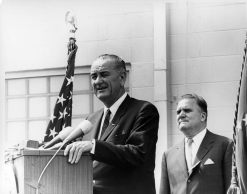United States v. Winans facts for kids
Quick facts for kids United States v. Winans |
|
|---|---|

|
|
| Argued April 3–4, 1905 Decided May 15, 1905 |
|
| Full case name | United States v. Winans |
| Citations | 198 U.S. 371 (more)
25 S. Ct. 662; 49 L. Ed. 1089; 1905 U.S. LEXIS 1110
|
| Prior history | 73 F. 72 (C.C.D. Wash. 1896) |
| Holding | |
| Treaty includes the Indians' individual right to fishing, hunting and other privileges. | |
| Court membership | |
| Case opinions | |
| Majority | McKenna, joined by Fuller, Harlan, Brewer, Brown, Peckham, Holmes, Day |
| Dissent | White |
| Laws applied | |
| U.S. Const. art. II § 2 cl. 2 (The Treaty Clause) | |
United States v. Winans was an important case decided by the U.S. Supreme Court in 1905. The Supreme Court is the highest court in the United States. This case was about protecting the rights of Native American people to fish and hunt. It specifically looked at the Treaty with the Yakima of 1855, which was an agreement made at the Walla Walla Council. The Court decided that this treaty, and others like it, meant that Native Americans kept their special rights to fish, hunt, and use certain lands.
Understanding Native American Rights
This section helps explain how the government's view on Native American rights changed over time. It shows how leaders worked to create new ways of supporting Native American communities.
What is Self-Determination?
In March 1966, Lyndon B. Johnson, who was the President of the United States, gave a speech to the United States Senate. The Senate is part of the U.S. government that makes laws. President Johnson talked about a new way for the country to work with Native American tribes.
He wanted to move away from old ideas where the government made all the decisions for Native Americans. Instead, he suggested a new idea called "self-determination." This means that Native American tribes should have more control over their own lives and futures. President Johnson wanted to build a partnership where tribes could help themselves and make their own choices.


